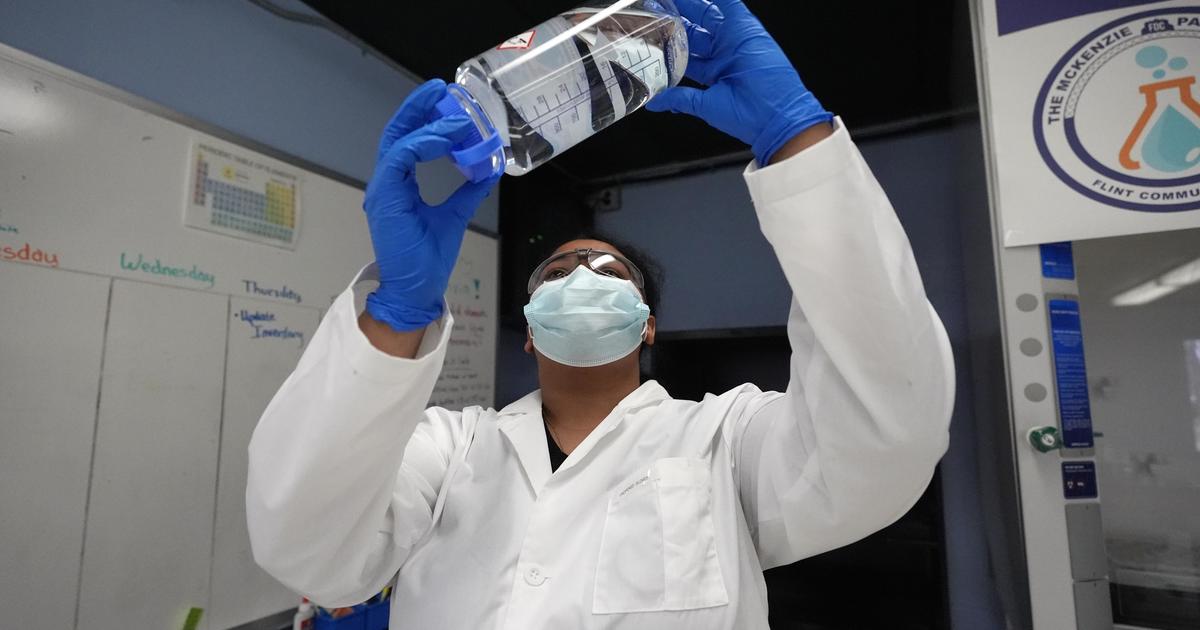Sea Lamprey Numbers Rise In Some Great Lakes, Drop In Others
ANN ARBOR (WWJ/AP) - Officials say the invasive sea lamprey is gaining ground in Lake Superior and Lake Erie, while its numbers remain at near-historic lows in the other Great Lakes.
Sea lampreys are eel-like parasites that attack fish, such as trout, salmon and whitefish, using suction-cup mouths and razor-sharp teeth to fasten themselves to their prey and suck out body fluids. The average lamprey kills up to 40 pounds of fish in its lifetime. They invaded the lakes in the last century and decimated native fish until a poison was developed that brought them under control.
The Great Lakes Fishery Commission says treatment of key tributaries is keeping a lid on lampreys in Lakes Huron, Michigan and Ontario. But their populations are rising in Superior and Erie for unknown reasons.
The commission says lampricides have been applied in several rivers flowing into Lake Superior. The effects won't be known until next year.
Lampreys killed about 103 million pounds of fish per year in the lakes before control measures began. Now, the annual toll is below 10 million pounds. The U.S. spends about $14 million a year on lamprey control, while Canada spends about $7 million.
"Unfortunately, sea lampreys are here to stay," David Ullrich, chair of the Great Lakes Fishery Commission, said in a statement. "Sea lampreys are resilient beasts and we cannot let up on our control effort. ... Without sea lamprey control, the Great Lakes fishery would be laid to waste by the voracious predator."
By lake, the latest sea lamprey status is as follows:
LAKE ONTARIO: Consistent treatment effort on Lake Ontario for the past 25 years has contributed to keeping lamprey numbers at or near target and historic lows. Sources to watch include the Niagara River, but this connecting channel currently has a low larval sea lamprey abundance.
LAKE MICHIGAN: Heightened and targeted treatment strategies in Lake Michigan employed since 2012, and biennial treatment of the Manistique River since 2003, have contributed to historic lows in abundances; targeted treatment was applied again in 2017. Lake Michigan likely benefits from treatments in the northern portion of Lake Huron (e.g. St. Marys River). Sources of concern include tributaries that are difficult to treat in the northern and eastern portions of the lake.
LAKE HURON: Heightened and targeted treatment strategies in Lake Huron employed since 2010, including two large-scale treatments of the St. Marys River, have contributed to historic lows in lamprey abundances; another round of targeted treatment is scheduled for 2018. Lake Huron likely benefits from the treatment of tributaries in the northern portion of Lake Michigan (e.g. Manistique River). Sources to watch include the St. Marys River and tributaries that are difficult to treat in the northern portions of the lake.
LAKE SUPERIOR: A targeted treatment strategy was implemented in 2016, and the impact of these efforts will not be seen until 2018. The reasons for the relatively high abundances in Lake Superior are not fully apparent. Sources to watch include lentic areas of the Chippewa, Nipigon, Gravel, and Batchawana rivers. Treatments have recently occurred in these systems. The Bad River has also been treated recently, however, some concerns remain that treatment effectiveness may not have been ideal for this system. The St. Louis River, which has undergone significant restoration as an area of concern through the Great Lakes Water Quality Agreement, looms as a potential sea lamprey producer that would be difficult to treat.
LAKE ERIE: The reasons for the relatively high abundances in Lake Erie are not apparent. Sources to watch include the St. Clair River, the only known source of sea lamprey not treated regularly. Intensive larval survey efforts recently conducted to identify previously undetected populations did not reveal any untreated tributaries. Preliminary acoustic telemetry results indicate that adult sea lamprey are exploring tributaries not currently treated, however, that does not necessarily mean the tributaries are producing sea lamprey. Larval assessment surveys will be conducted to look for recruitment in these tributaries.
© Copyright 2017 CBS Broadcasting Inc. All Rights Reserved. The Associated Press contributed to this report.



